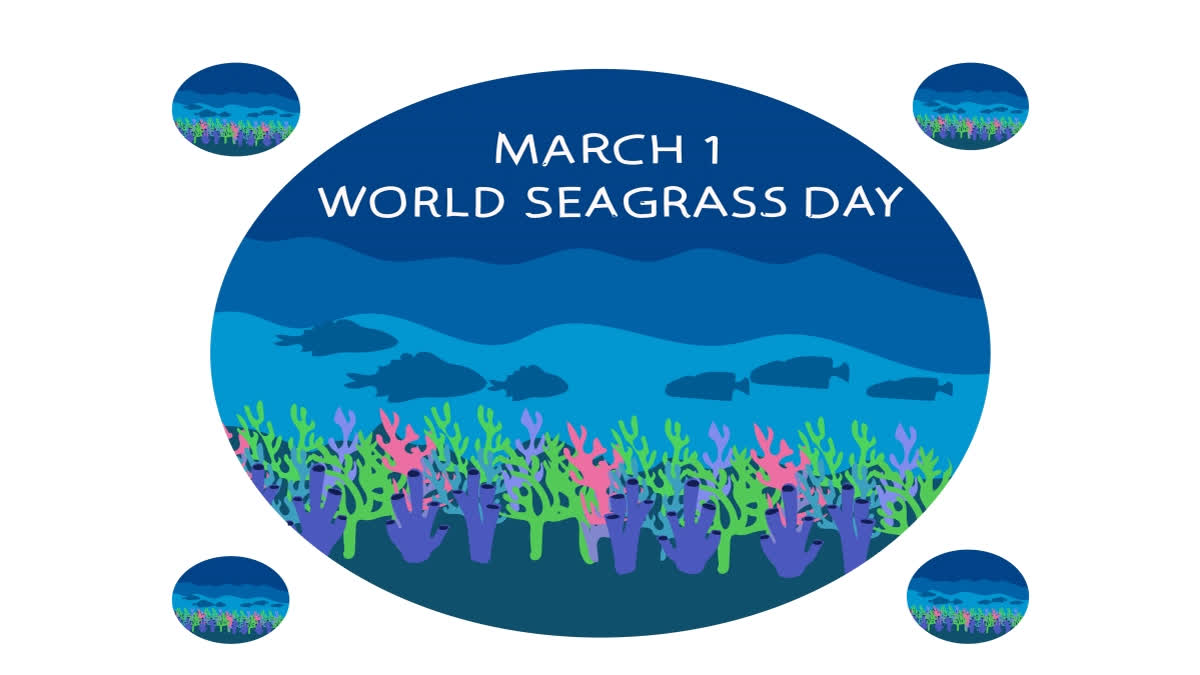Hyderabad: Every year, March 1 is observed as the World Seagrass Day. In May 2022, the United Nations General Assembly adopted a resolution proclaiming March 1 as World Seagrass Day.
The resolution by the General Assembly highlighted the urgent need to raise awareness at all levels and to promote and facilitate actions for the conservation of seagrasses in order to contribute to their health and development, bearing in mind that enhancing ecosystem services and functions is important for the achievement of the Sustainable Development Goals.
About seagrass and why they matter - Seagrasses are marine flowering plants that are found in shallow waters in many parts of the world, from the tropics to the Arctic circle. They form extensive underwater meadows, creating complex, highly productive and biologically rich habitats.
Covering only 0.1 per cent of the ocean floor, these seagrass meadows provide food and shelter to thousands of species of fish, seahorses, turtles and sustain some of the world’s largest fisheries.
Seagrass improves water quality by filtering, cycling and storing nutrients and pollutants, reducing contamination in seafood. They can store up to 18 per cent of the world's oceanic carbon, making them a powerful nature-based solutions to tackle climate change impacts.
Because they buffer ocean acidification, seagrass contributes to the resilience of the most vulnerable ecosystems and species, such as coral reefs. And to the coastal populations, they act as the first line of defense along coasts by reducing wave energy, protecting people from the increasing risk of floods and storms.
Despite its important contribution to sustainable development and climate change mitigation and adaptation, seagrasses, which are a core component of marine biodiversity is in danger and only about a quarter of all meadows fall within marine protected areas.
According to the United Nations, seagrasses have been declining globally since the 1930s, with the most recent census estimating that 7 per cent of this key marine habitat is being lost worldwide per year.
21 per cent of seagrass species are categorised as near threatened, vulnerable and endangered species under the International Union for Conservation of Nature Red List of Threatened Species. The combined pressures of coastal development, pollution, including land-based run-off, climate change, dredging and unregulated fishing and boating activities are key drivers of the degradation of seagrasses and their associated ecosystems.
Seagrasses are critical for life underwater, but also provide wide-ranging benefits to people on land. Raising awareness about their importance for community well-being, whether through food security from fish production, improved quality of water filtered by seagrasses, protection of coasts from erosion, storms and floods, or carbon sequestration and storage will drive efforts around the world to conserve, better manage and restore these ecosystems.
The protection and restoration of seagrass meadows will help countries achieve multiple economic, societal and nutritional objectives, aligning with and supported by policies implemented at the national, regional or global levels.
Inclusion of seagrass management, conservation and restoration should be a critical component of sustainable blue economy strategies in the future. Projects are already underway in various countries, and a few have even been selected as World Restoration Flagships initiatives.


